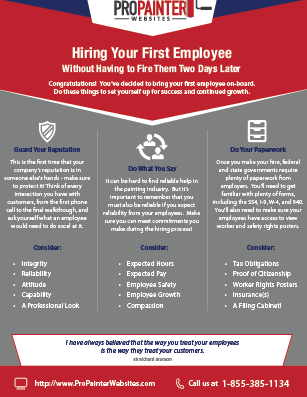Essential Seasonal Aspects Of Commercial Exterior Paint: What You Should Recognize
Essential Seasonal Aspects Of Commercial Exterior Paint: What You Should Recognize
Blog Article
Uploaded By-Regan Chaney
When you're preparing a business exterior painting task, seasonal aspects can make or break your results. You'll wish to take into consideration how temperature level and moisture influence paint application and drying times. Choosing the appropriate season can ensure your paint adheres effectively and lasts longer. However which periods are really the best for this type of job? Let's explore the crucial elements that can influence your project's success.
The Impact of Temperature on Paint Application
When you're preparing a commercial outside paint task, the temperature level can dramatically affect exactly how well the paint adheres and dries out.
Preferably, you intend to paint when temperatures vary in between 50 ° F and 85 ° F. If it's too cool, the paint might not heal effectively, resulting in issues like peeling or cracking.
On the other hand, if it's as well warm, the paint can dry too swiftly, protecting against proper attachment and leading to an unequal surface.
You need to likewise think about the time of day; early morning or late afternoon uses cooler temperature levels, which can be a lot more favorable.
Constantly examine the maker's referrals for the particular paint you're using, as they often supply guidance on the ideal temperature range for ideal outcomes.
Humidity and Its Result on Drying Times
Temperature isn't the only environmental factor that affects your business outside paint job; moisture plays a considerable role too. High moisture degrees can slow down drying times dramatically, impacting the total high quality of your paint job.
When the air is filled with dampness, the paint takes longer to cure, which can result in concerns like inadequate bond and a greater threat of mold development. If you're painting on a particularly humid day, be gotten ready for extended delay times between coats.
It's essential to keep an eye on regional weather conditions and plan accordingly. Ideally, go for moisture degrees in between 40% and 70% for optimum drying out.
Keeping https://www.popularmechanics.com/home/interior-projects/how-to/g110/interior-painting-tips-how-to-paint-your-walls-like-a-pro/ consider mind ensures your project remains on track and provides an enduring coating.
Best Seasons for Commercial Exterior Painting Projects
What's the very best season for your industrial exterior painting tasks?
Springtime and early fall are commonly your best bets. Throughout these periods, temperatures are moderate, and moisture levels are commonly lower, creating excellent problems for paint application and drying out.
Avoid summer's intense heat, which can create paint to completely dry too rapidly, leading to bad bond and surface. In a similar way, winter's cool temperatures can hinder proper drying and treating, running the risk of the long life of your paint job.
Go for what color should ceilings be with temperature levels in between 50 ° F and 85 ° F for optimum outcomes. Bear in mind to examine the neighborhood weather prediction for rain, as wet problems can destroy your project.
Preparation around these factors ensures your paint job runs smoothly and lasts much longer.
Conclusion
To conclude, planning your business external paint projects around seasonal considerations can make a significant distinction in the result. By organizing work during the optimal temperatures and moisture levels, you'll make sure far better attachment and drying out times. Bear in mind to keep an eye on local weather forecasts and choose the correct time of year-- spring and early autumn are your best bets. Taking these actions will certainly help you accomplish a long lasting and professional surface that lasts.
